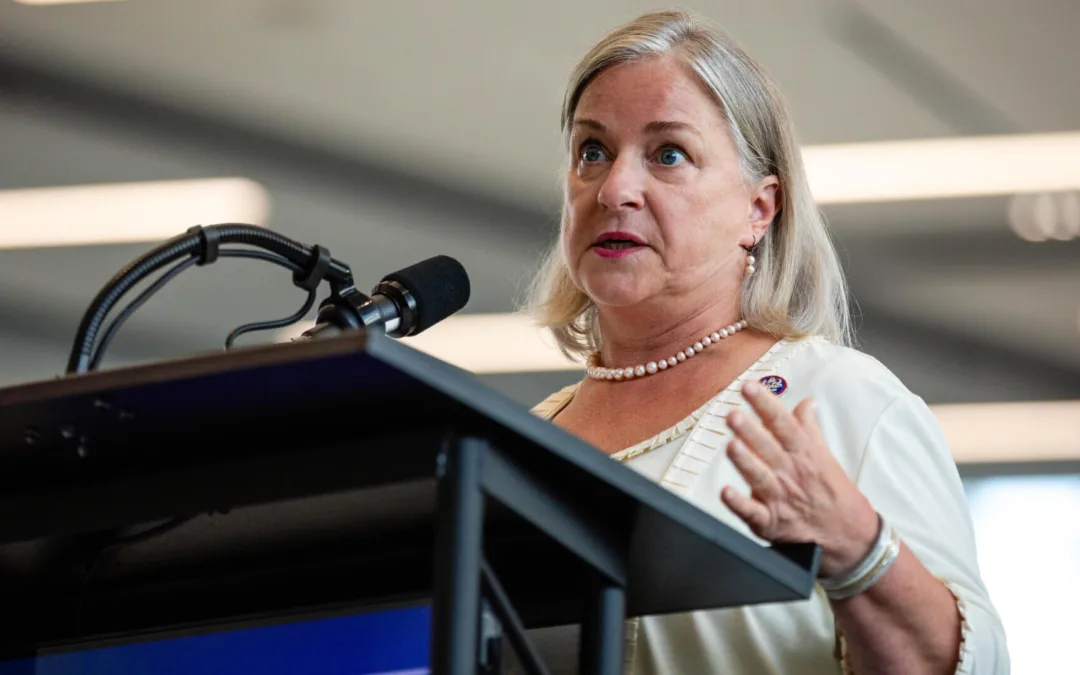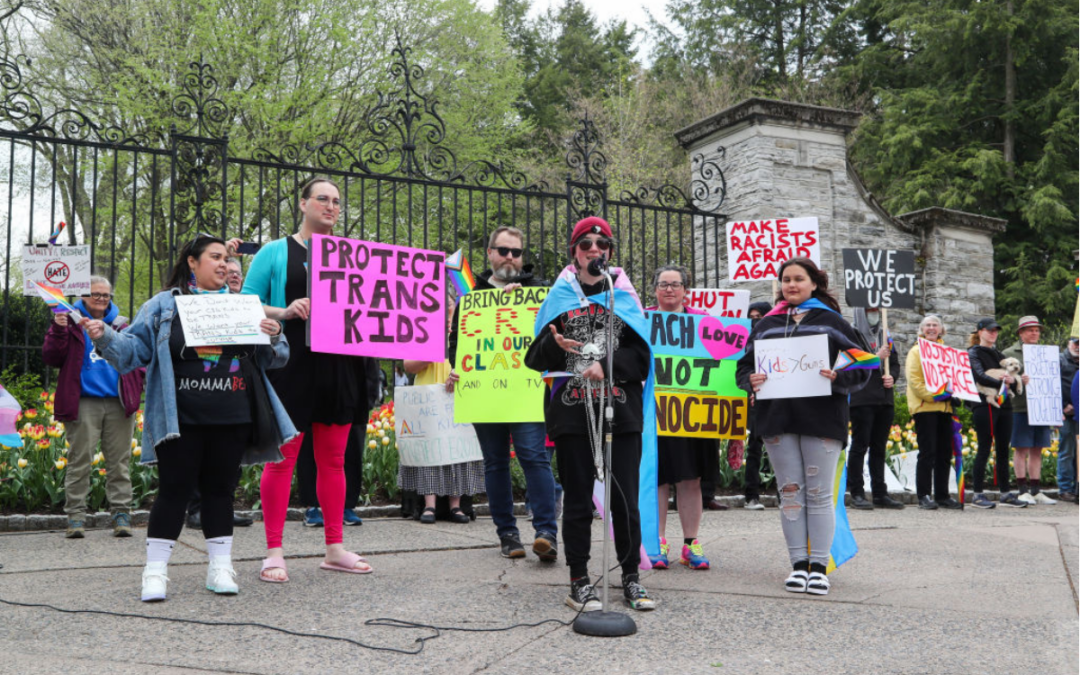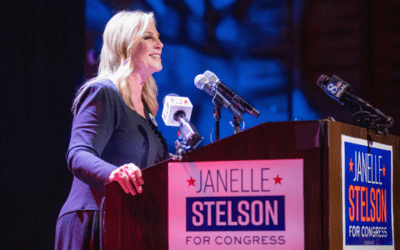
Election office workers wear face masks and gloves as they process mail-in ballots in the ballot duplicating room at the Orange County Supervisor of Elections office on October 26, 2020 in Orlando, Florida. With nine days until the November 3 election, more people already have cast ballots in this years presidential election than voted early or absentee in the 2016 race. (Photo by Paul Hennessy/NurPhoto via Getty Images)
Don’t listen to the lies—here are the numerous ways election officials work year round to make sure your ballot is counted.
Election Day is still six days away, but 75 million Americans have already cast their ballots, according to the US Elections Project. And that number will only continue to climb through Election Day, possibly shattering records in the process.
Even as Americans embrace their democratic right to vote in record numbers, however, voters are afraid their votes won’t count.
Why? President Donald Trump has spent months attacking the validity of mail-in ballots, falsely claiming that they lead to voter fraud, even as numerous studies have debunked his lies. The Trump campaign, Republican National Committee, and Republicans in state legislatures have filed dozens of lawsuits across the country to limit options like mail-in voting, curbside voting, and ballot drop boxes. And foreign nations like Russia and Iran are once again trying to sow seeds of doubt in the legitimacy of the election.
Collectively, those efforts have raised understandable concerns for voters. But here’s the thing: None of those entities oversee elections and certify results.
Instead, thousands of state and local election officials—plus election security experts—are in charge of administering and ensuring the security of the 2020 election. And those individuals have a message they want to deliver to voters: Your votes are safe and secure.
How Elections Officials Keep Your Ballot Safe
Those rules vary from state to state and county to county, but in every jurisdiction, election officials work year-round to ensure that voting is safe and secure.
For the 1.8 million registered voters in Orange County, California, that means their election officials pick up ballots from drop-boxes or voting centers and deliver them directly to the ballot-counting facility. There, ballots are reviewed and officials verify the voter’s signature against their voter registration. Only then are the ballots opened and counted—and every valid ballot is counted.
“I think the trouble is that people are hit with this idea of ‘there’s trouble with the system’ or ‘there’s influence’ once every four years in a presidential election,” Neal Kelley, Orange County’s voter registrar, told COURIER. “But this work behind the scenes goes on daily to ensure that these systems are sound, that the audits are appropriate, that all the checks and balances are in place.”
All states have various levels of safeguards in place. They include: ballot envelopes to protect ballots and keep them secret; requiring voter signatures that must be verified against voter registrations; ballots with voter-specific QR codes or bar codes that ensure voters can only cast their ballot once; and a cure process that allows election officials to contact voters to correct any potential issues with their ballots. Many counties allow you to track your ballot to monitor the process.
Election officials also have ways to audit ballots to ensure there are no discrepancies or issues. In North Carolina, counties can audit the results in multiple ways, including matching the number of voters who checked into a polling place against the number of votes recorded there. Officials in every county must also hand-count paper ballots in two randomly chosen precincts to confirm that vote totals match the results from the digital scanners. If they find any discrepancies, it would prompt an investigation and a delay in certifying election results.
David Becker, executive director and founder of the Center for Election Innovation & Research, said the emergence of auditable paper ballots was a huge victory for election security.
“About 95% of all voters will be voting on auditable paper ballots,” Becker said on a press call last week.
Here is one example of how auditable paper ballots work, again from North Carolina: Voters use paper ballots that are fed into scanners the state has tested and which are not connected to the internet. Once polls close on Election Day, the memory cards from the scanners are transported to county election offices. Voting results are then copied to an offline computer before being transferred to yet another memory card and uploaded to a different computer that is connected to county and state systems.
Other key swing states like Arizona, Florida, Georgia, Michigan, Pennsylvania, Virginia and Wisconsin have voter-verified paper trail backups in place. These voters will either use a mail-in paper ballot, or machines that produce a verifiable and auditable paper trail.
Beck also cautioned that seeing long lines or even the occasional technical malfunction isn’t a sign that everything has gone wrong.
“There will be other technical malfunctions that happen, but a technical malfunction is not an intentional attack,” Becker said. “There will be polling places that open late, sometimes for very mundane reasons like someone forgot to show up with a key. There are going to be poll workers that don’t show up. But almost every problem that occurs is what you can naturally expect when 150 million Americans do something at the same time in a process run by about a million volunteers under about 10,000 different sets of rules. And that’s entirely normal.”
After 2016, Elections Officials Are Coordinating to Stop Foreign Interference
In 2016, Russia launched what turned out to be a massively successful influence operation to interfere in the US election. American intelligence agencies determined that Russia did not change any actual votes during the election, but hackers did manage to gain access to voter registration databases in Illinois and Arizona.
This year, there is evidence that Russia and other countries, like Iran, are at it again. While US officials say it’s very unlikely that foreign hackers could alter any actual vote counts, their mission to delegitimize American democracy continues. To counter those efforts, intelligence officials and agencies like the FBI are working around the clock.
Election officials have also adapted. Becker emphasized that in the aftermath of the 2016 election, federal, state, and local election officials began to coordinate much more closely to share information and better protect election infrastructure. That work, he said, has paid off.
“I am extremely confident that our actual election infrastructure is going to be able to handle this,” Becker said. “This does not mean it’s perfect. This does not mean it’s invulnerable to attack. There is no such system. It’s just almost impossible to attack election infrastructure without it being detected now and mitigated in some way.”
Kelley also acknowledged concerns about possible foreign interference, but expressed confidence that he and his peers around the nation were doing everything they could to guard against any such attacks.
“We work closely with Homeland Security and the FBI on the intelligence side. We have doubled our security platform since 2016,” Kelley said. “I want to give assurances to the voters that we are doing daily work to ensure our system is protected.”
Disinformation Is a Major Concern of Elections Officials
What Becker is worried about, however, is disinformation and narratives questioning election security—a narrative he believes foreign actors will capitalize on.
“I think one of the biggest challenges we face right now … is the way that our adversaries and others may seek to use disinformation to create circumstances that can further diminish voter confidence,” Becker said.
This could delegitimize the process and reduce the nation’s confidence in the final election outcome, which would only serve to further inflame tensions in the US. “Disinformation is designed to divide us,” he said.
Lies, conspiracy theories, and fear-mongering surrounding elections run rampant on social media, with President Trump himself often boosting and promoting disinformation.
To combat all forms of disinformation the US Cybersecurity and Infrastructure Security Agency launched its Rumor Control initiative debunking mis- and disinformation. Social media companies like Facebook and Twitter are also planning to clamp down on any false election claims to try and prevent chaos, especially as it’s likely that a winner may not be declared for days, or even weeks.
Despite these fears and concerns, Becker believes the 2020 election will be the most secure the US has ever had. “We are much better off today than we were going into the election of 2016 and that’s a very good thing,” he said.
Kelley sounded a similar note of confidence. “I feel like we have a really good system that we’re ready to deploy,” he said. “I feel confident we’ll have a good election.”

For Rep. Susan Wild, supporting PA families includes reproductive rights and much more
Rep. Susan Wild wants to be very clear with Pennsylvanians: Donald Trump is committed to taking away women’s reproductive freedom, but he is not...

School districts working with anti-LGBTQ groups can cost your kids’ schools millions
Parents across South Central Pennsylvania are worried about the potential financial impacts working with anti-LGBTQ groups may have on their school...

VIDEO: Trump distances himself from his anti-abortion views
Donald Trump appeared on WGAL on Tuesday and continued to distance himself from his anti-abortion views claiming that reproductive rights are now a...

VIDEO: Community pushback gets school board to rescind decision on denying gay actor’s visit
Cumberland Valley School Board offered a public apology and voted to reinstate Maulik Pancholy as a guest speaker a week after the board voted to...

VIDEO: Project 2025 brings nuclear armageddon back into vogue
Project 2025 is a titanic document, with plans ranging from cutting half of all government employees to targeting reproductive rights on a scale...





